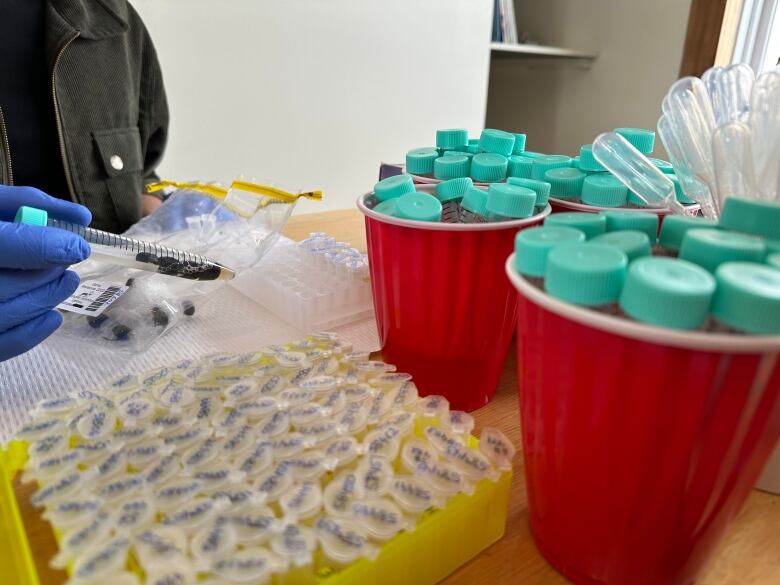Researchers in N.W.T. monitor caribou populations by collecting poop
Sahtu Renewable Resources Board opts for less-invasive way to track caribou than by collaring them

Call it research methodnumber two.
Wildlife officials with the SahtuRenewable Resources Board in the N.W.T. are trying to learn more about the northern mountaincaribou populationand how it's being affected by climate change, by analyzingthe animals' poop.
The board has been studying caribou droppings for more than a decade, as a way of tracking and monitoring the local herds,and how they're related and interact. Researchers were back out in the field last monthcollecting hundreds of fresh samples.
The idea is that fecal analysisis a less-invasive method ofstudying caribou populations than collaring the animals. That method, commonly used by the N.W.T. government, involves capturing animalsin a net fired from a helicopter and then fitting the beastswith collars for GPS tracking.
"Collaring caribouis not good for the caribou, according to the elders," saidLeon Andrew, research director with the board.
"The method of analyzing fecal samples might shed some light on if there's another way to do [that]kind of research."
Researchers spent a week in Marchflying to different parts of the region to findlarge cratering sites, where the animals have dug through the snow to forage.

"We land in that location and we basically go in different directions and gather fecal sample[s]. We look for pucks together, pucks of fecal sample, which is like pellets on one spot. Like, it's a huge chunk of pellets," said Manisha Singh, No N P'ne research manager with the board.
Singh said they use a wooden stick to put the poop in a bag. They aim to collect about 30 to 50 samples from each site.
The team then does something Singh calls "swishing," which involves putting the samples in a solution and mixing it before the samples are flown to a lab at Trent University in Ontario for analysis. That involves extracting genetic information that can help shed light on how different herds or groups are moving or changing, and how they're related to each other.
"What we're trying to learn from this project is seeing the movement of caribou and the connectivity across Mackenzie Mountains area, across Sahtu, across Northwest Territor[ies]," Singh said.

"Right now our aim is to determine how far the caribou are moving, to kind of map out that area like, if it's extending ...with climate change."
Singh says the fecal samples will be analyzed over the next few months and then discussed with local residents at a community workshop. She calls it an "amazing example of how traditional knowledge and Western science could work together."
"It's up to the community to interpret the data too, because I think the community has so much information around movement of caribou and how climate change is impacting that ...we would need elders' expertise to interpret the data."

A report would then be published later this year, she said.
Andrew hopes the project shows that fecal analysis is a good alternative to collaring, when it comes to studying caribou populations.
"If it works ... I think the government should think about it," he said.
With files from Liny Lamberink












_(720p).jpg)


 OFFICIAL HD MUSIC VIDEO.jpg)
.jpg)



























































































